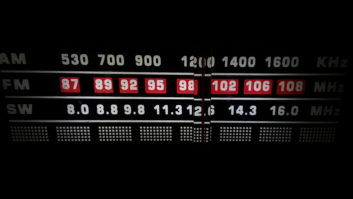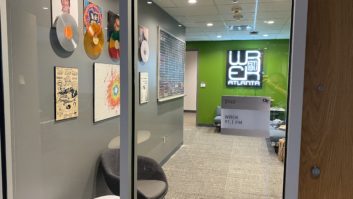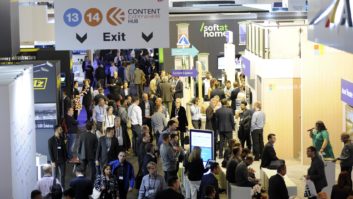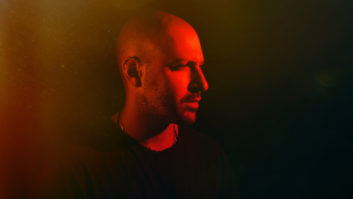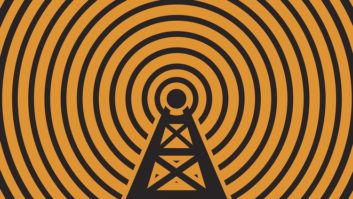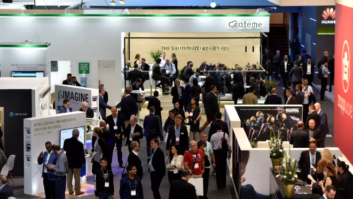As the fall turn of the broadcast trade show season gets its wind, eyes turn to San Francisco and the AES show, more accurately the 129th AES Convention, Nov. 4–7, at the Moscone Center.

San Francisco, background, hosts the AES convention once again. (You don’t have to swim to visit Alcatraz Island, where you can get a look at the site of the first lighthouse and U.S.-built fort on the West Coast, and of course the famous penitentiary.) © San Francisco Convention & Visitors Bureau photo For show veterans it is a paradise of audio goodness with sessions and floor exhibits running the range from basic audio theories to the latest in digital technology. Applications cover studio to live sound to installation to broadcast. A bonus is that several audio and engineering “all-stars” will be there to impart their wisdom.
Chairman of Broadcast and Streaming Sessions David Bialik listed several sessions of note, with topics including listener fatigue and retention, stream formats for content delivery networks, broadcast facility design, audio at the Olympics and audio processing for streaming.
“‘Listener Fatigue and Retention’ is a session we started a few years ago to study how to keep the audio appealing to the listener. ‘Stream Formats for CDNs’ is a very important topic for streamers and will discuss the need for a standard among other things.
“‘Broadcast Facility Design: Attending to the Details’ will feature John Storyk and other architects, designers and is always standing room only. ‘Audio for the Olympic Broadcast’ is a great case study of a multimedia production. The audio processing sessions have the designers and users of audio processors discussing technology and technique. Due to different needs there are separate sessions for radio and streaming.”
“AES conventions have seen a consistent increase in attendance from broadcasters,” Executive Director Roger Furness said. “Our presentations are relevant to their immediate concerns, and our panelists are highly respected members of their community.”
What: 129th AES Convention
When: Nov. 4–7
Where: Moscone Center, San Francisco
Who: “The largest gathering of audio professionals and enthusiasts on the globe, attracting delegates from over 100 countries … Workshops, tutorials, technical papers and the exhibition floor provide attendees with a wealth of learning, networking and business opportunities.”
How Much: Full program w/advance registration is $345 for AES members, $465 for others; see website for students, exhibits only and other variants He said Bialik’s insights into pressing concerns have been prescient. “The AES has earned a reputation as an invaluable forum for topics that impact heavily on broadcasters.”
Ghost of radio future
There’s no arguing that radio is changing rapidly, on almost every front. Change is evident in production and distribution/transmission.
David Bialik will host a panel looking at “Innovations in Digital Radio.” Be careful to specify which David you are addressing during the Q&A session, because joining him will be David Layer of the NAB, David Wilson of the Consumer Electronics Association and Dave Casey of DTS, as well as consultant Skip Pizzi and Steve Fluker of Cox Radio.
Long-time Radio World contributor Tom Ray, vice president and corporate director of engineering for Buckley Broadcasting, will helm “Audio Processing for Radio.” Guests will be Bob Orban of Orban, Frank Foti of Omnia and Jeff Keith of Wheatstone Vorsis. Looks something like a ’27 Yankees of audio processing.
Ray said: “We’re looking to have a nice, hopefully spirited discussion about processing for AM and FM radio — why we do what we do and the way we go about it. We’ll also be discussing the advances and control advantages of digital processing over analog processing.
“Many who belong to AES handle and mix audio in a controlled environment for a controlled environment: a movie theater, television home theater, recording. With broadcast radio, we can never be sure where our product will be listened to — in the car, on a construction site, on the kitchen table — and therefore need to process what some consider excessively. But there is a reason for that, and we hope attendees come away with that understanding.”
A similarly themed session, targeted for streaming, will be run by Optimod refurb wizard Bill Sacks. Internet streaming presents different problems and considerations in comparison to traditional processing for broadcast; with streaming becoming more widespread, the topic is of growing importance.
Ghost of radio past
When is there too much processing and when not enough? Too much or too little can lead to listener fatigue. Tired listeners turn away from a station or even radio as a whole.
CEA’s David Wilson, whose commentaries appear in Radio World, will lead a group of experts examining “Listener Fatigue and Retention.” He’ll be joined by Foti, Sacks, George Massenburg — a Grammy Award-winning engineer, inventor of the parametric equalizer and studio designer — Sean Olive of Harman, J.J. Johnston of DTS and Sam Berkow, founder of acoustic design firm SIA Acoustics.


AES panels attract engineering firepower. Shown from last year, from left rear: David Bialik, Dom Bordonaro, Andrew Mason, Jim Johnston, Frank Foti, Tim Carroll and Marvin Caesar; front, Jim Starzinski, Ken Hunhold, and Thomas Lund.
IP promises to be another strong topic with several sessions devoted to the subject.
Kirk Harnack of Telos Systems will team with Igor Zukina of Streamcom to take a look at PungaNet, a nationwide IP audio distribution network in New Zealand linking scattered studios into a cohesive unit. Zukina wrote about PungaNet, which he designed, in Radio World’s Aug. 1 issue.
“While high-quality, low-latency IP audio technology is gaining wide acceptance within broadcast studios, its application over wide-area networks, and even over the public Internet, is not widespread,” Harnack said.
Broadcast & Streaming Sessions The convention will link three panels in a dedicated streaming track, according to Broadcast & Streaming Sessions Chair David Bialik: “Since our last convention we have witnessed the rapid, almost universal embrace of streaming. The resolution of issues such as stream formats is becoming increasingly urgent.”
This list of sessions is preliminary; see final list on-site:
Streaming
“Stream Formats for Content Delivery Networks”
“Audio Processing for Streaming”
“Audio Performance in Streaming”
Broadcast
“Gaining Methods and the New Loudness Recommendation EBU R 128”
“Broadcast Facility Design: Attending to the Details”
“Innovations in Digital TV”
“Innovations in Digital Radio”
“The Lip Sync Issue”
“Case Study of Punga Net: Uniting Radio Stations Across a Country”
“Audio for the Olympic Broadcast”
“Careers in Broadcasting”
“Audio for Newsgathering”
“Audio Over IP: A Tutorial”
“Listener Fatigue and Retention”
“Loudness, Metadata, Concerns for DTV”
“Audio Processing For Radio” “Recently a network of cultural radio stations, spread across much of New Zealand, implemented a terrestrial IP audio network. More than a one-to-many network, however, Iwi Radio’s PungaNet allows stations to publish, share and subscribe to high-quality stereo programs. Distribution can be one-to-may, but may also be one-to-one, or completely ad-hoc with instant setup and teardown of channels and distribution sizes.”
Also focusing on IP networking will be a session with Pizzi and Steve Church of Telos, “Audio Over IP: A Tutorial.” The two recently co-authored a book on the subject. In the same vein is “Audio Performance in Streaming,” moderated by David Prentice of Dale Pro Audio, and “Stream Formats for Content Delivery Networks,” moderated by Ray Archie of CBS.
Panels also will look at “Audio for Newsgathering” and “Careers in Broadcasting.” The latter includes Steve Lampen of cable maker Belden (yet another RW contributor) and William Blum, station engineer for KBLX(FM).
The show also will feature sessions with television/video audio applications. Radio personnel may find themselves having to deal with nontraditional topics like lip sync and loudness, given the convergence of distribution platforms.
Beyond broadcast and media streaming, the convention technical program includes sessions and events on live sound, game audio, standards and historical events.
The exhibit floor is open Nov. 5–7 and will feature companies peddling their audio wonders, some futuristically digital, some decidedly contemporary and a few with sepia-toned ear candy. A lot of new toys make their debuts at this show.
For those itching to get outside of the Moscone Center and see something new, Technical Tour Co-Chairs Jessica Livingston and Jeff McKnight have cooked up visits to local San Francisco audio sites, especially live sound/entertainment venues. Top pick for techies probably is the visit to Dolby Labs to see what Ray Dolby’s team is working on these days.
If those are not enough to keep you occupied, given that you wangled a trip to San Francisco don’t forget that the City by the Bay is famous for its restaurants; and you can head north, across the Golden Gate Bridge, and point your car toward the wineries of Napa Valley.






